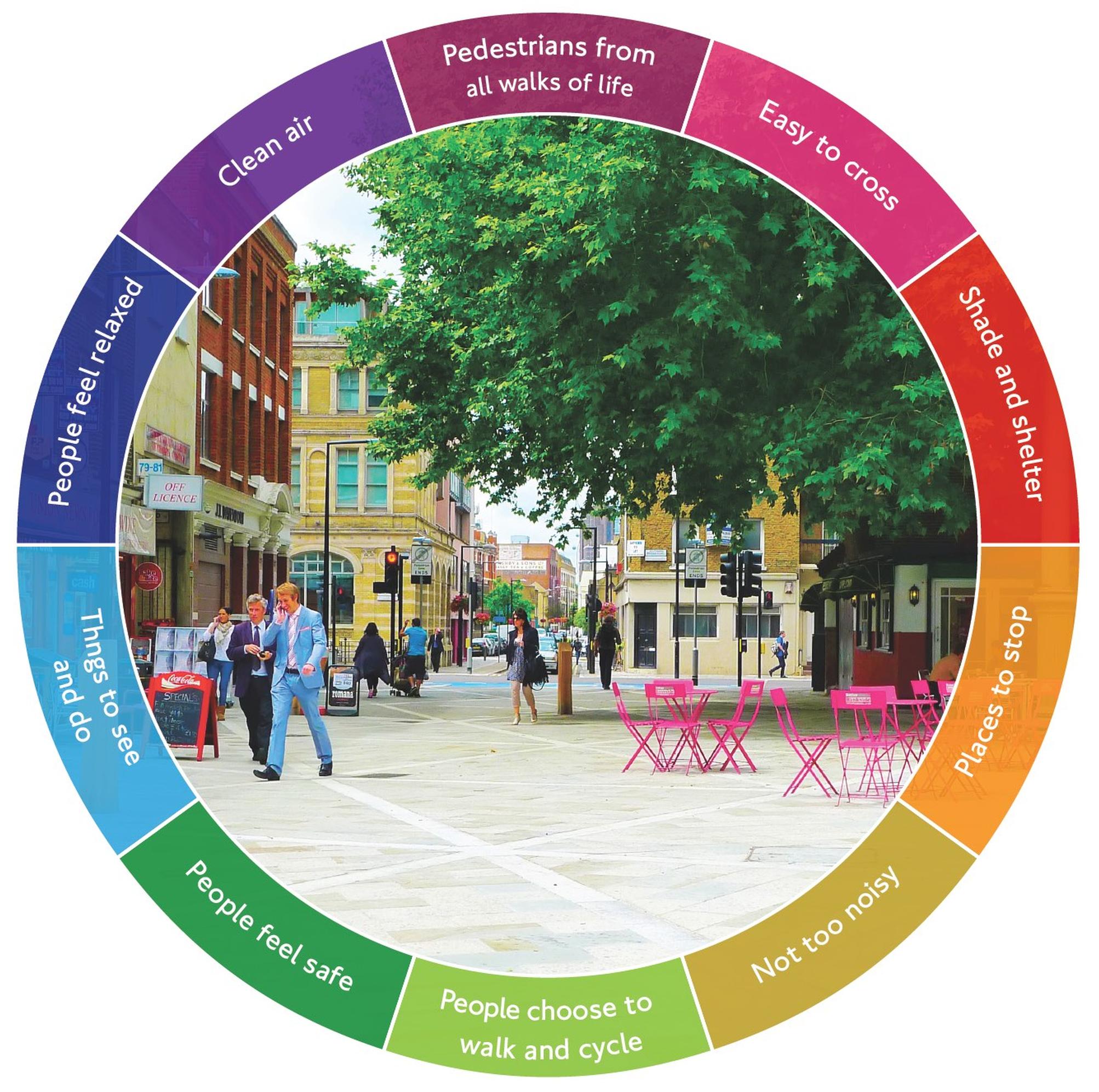

Take a holistic view when implementing air quality measures, Lucy Saunders will urge transport planners at Transforming London’s Streets
Adopting the right measures and policies when improving air quality can result in a host of connected health benefits at street level. This involves taking a holistic approach where you consider the whole street from building line to building line and all the activity that happens within it. The ‘Healthy Streets’ approach comprises ten indicators, designed to benefit those in transit through the street, such as pedestrians, cyclists and disadvantaged groups, as well as for people who want to stop and enjoy the street as a place.
If a street can deliver against all ten indicators then it will not only be providing an environment with good air quality but also a wide range of other health benefits such as reduced noise pollution and road danger, social interaction and inclusiveness. Most importantly from a health perspective, it will be an environment that is welcoming to all to walk, cycle and use public transport. This will enable people to build physical activity into their daily routine, which delivers significant and wide-ranging health benefits.
And taking this holistic approach not only leads to health benefits but social, environmental and economic benefits as well. The Healthy Streets approach focuses on the experience of being on a street: Does it feel safe? Is it easy to cross?
The policies and measures needed to deliver those outcomes are at every level from strategic policies, for example, the low emission zone, through to specific design measures of local schemes such as trees and planting. It is challenging for transport planners to take this joined-up approach but the prize is successful and sustainable schemes that deliver a wider range of benefits beyond just a reduction in air pollution.
Lucy Saunders is Public Health Specialist – Transport & Public Realm at Transport for London and the Greater London Authority
Image: Lucy Saunders

TransportXtra is part of Landor LINKS
© 2025 TransportXtra | Landor LINKS Ltd | All Rights Reserved
Subscriptions, Magazines & Online Access Enquires
[Frequently Asked Questions]
Email: subs.ltt@landor.co.uk | Tel: +44 (0) 20 7091 7959
Shop & Accounts Enquires
Email: accounts@landor.co.uk | Tel: +44 (0) 20 7091 7855
Advertising Sales & Recruitment Enquires
Email: daniel@landor.co.uk | Tel: +44 (0) 20 7091 7861
Events & Conference Enquires
Email: conferences@landor.co.uk | Tel: +44 (0) 20 7091 7865
Press Releases & Editorial Enquires
Email: info@transportxtra.com | Tel: +44 (0) 20 7091 7875
Privacy Policy | Terms and Conditions | Advertise
Web design london by Brainiac Media 2020